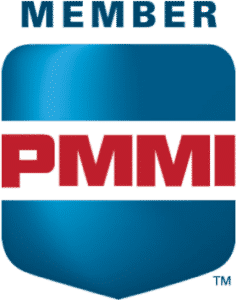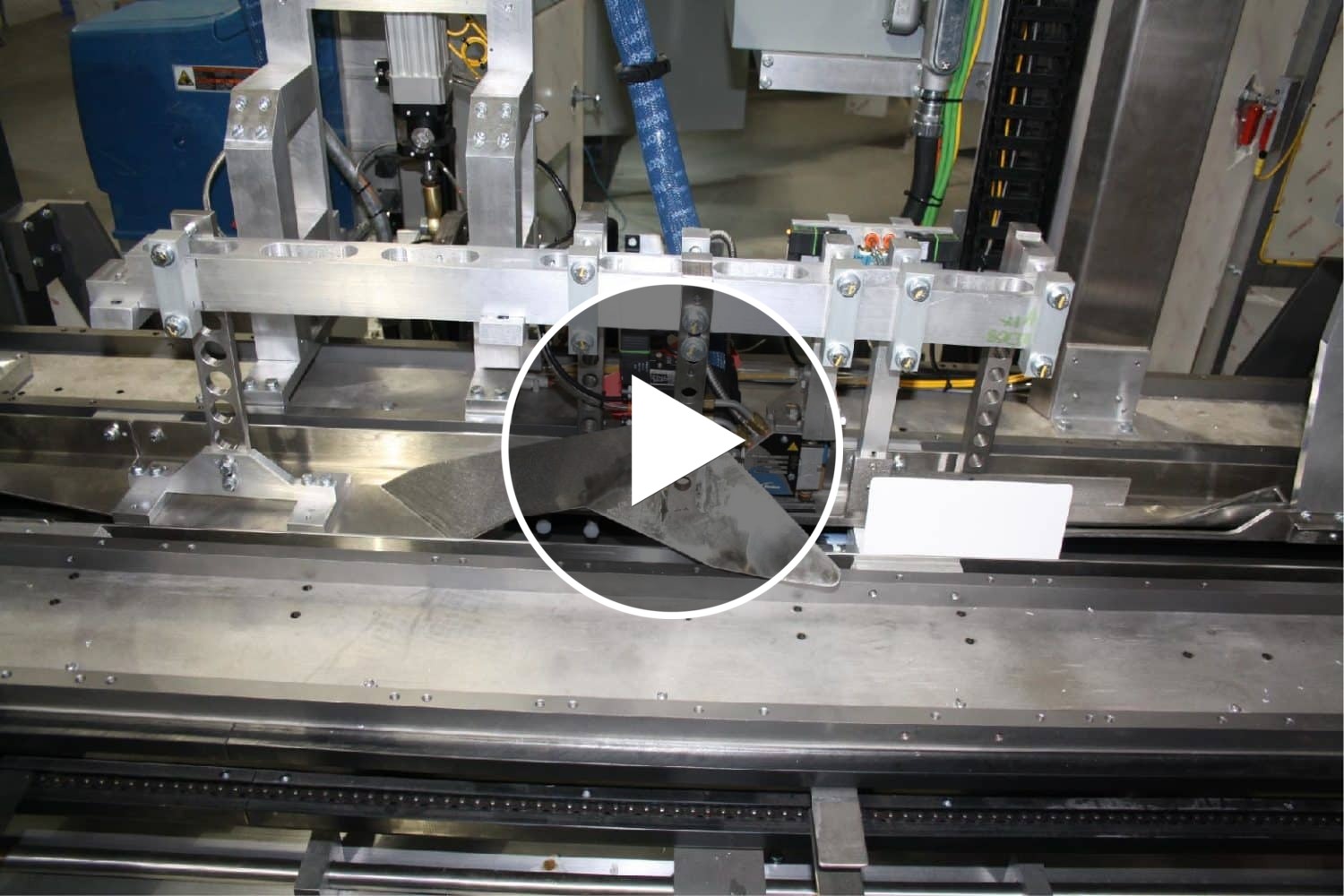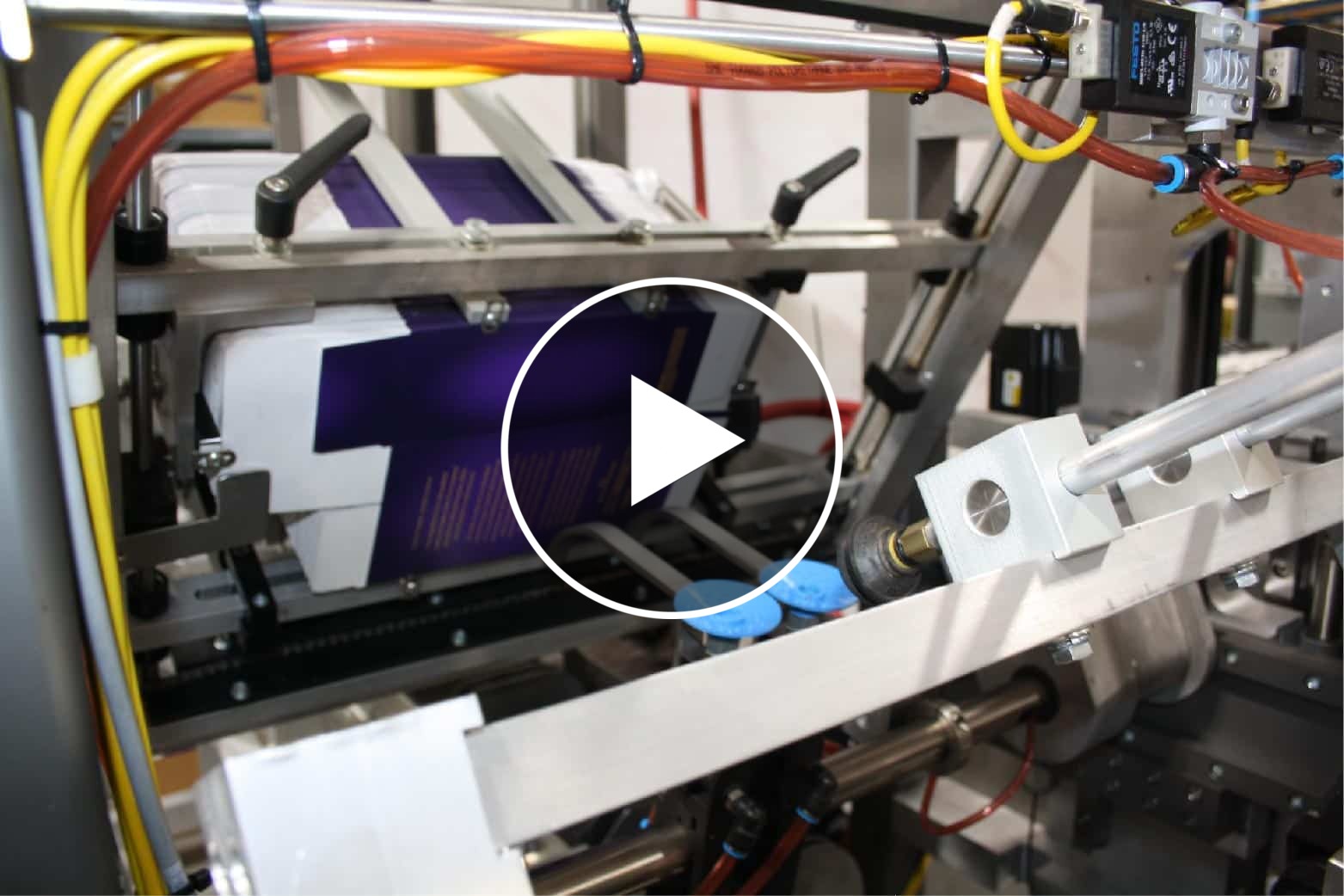Top Load or End Load Multi-Pack Cartons?
Problem
Deciding on whether to top load or end load multi-pack cartons is always a tough choice for end users. Both solutions offer advantages and disadvantages in terms of automation and machine design. The purpose of this education piece is to highlight the key machine design differences between these two solutions.
Top Load Cartoning
Carton Former
When you top load multi-pack cartons, you will typically need three different types of machines. The first machine that starts the line is the carton former. This system will glue or auto-lock the base of the carton. Depending on speeds, the carton will be formed onto either a flighted conveyor or a general style conveyor (table top or belt).
Top Load System
After the carton is successfully formed, the product will collate via an engineered infeed system. A servopac accumulation system that collates the product is a common solution for this application. A Delta 3 or Gantry Robot will then pick the product and top load the formed carton. This process will continue until the required count in the carton is achieved. The carton will then index to the top sealing station of the system.
Top Closing
The carton will then come to a top sealing station where the top of the carton will be sealed via tuck or glue. There are also instances where end users require tri-seal closing which requires an additional machine step. After this process is completed, the carton will be discharged downstream for further processing.
End Load Cartoning
Carton Erector
The heart of every end load cartoner is the carton feeder. A rotary or reciprocating feeder typically completes this process. The carton will be erected on the main chain conveyor of the cartoner and indexed to the correct loading position.
Carton End Loading
The servopac accumulation system collates product. The servopac will index a train of product to a gantry or Delta 3 robot. The robot will pick and place the product into loading funnels. This process will continue until the correct count is achieved. After achieving the correct count, a series of pushers will end load the cartons. The loading funnels actuate to the crease line of the carton to mitigate catch points.
Carton Sealing
Carton sealing is the most standard process of an end load multi-pack cartoner. A Nordson Glue System or AFA Tuck System will seal the cartons. Other options such as auto-bottom or hanger-tab closures are available as well.
Benefits
Top Load Multi-Pack Cartoner
- Better magazine capacity as the carton blanks do not have a manufacturer’s glue joint resulting in a less overall thickness per carton.
- Ability to seperate three key processes into three machines. This ability allows for a host of benefits including better accumulation, improved process tracking, and easier integration of ancillary equipment.
- Fewer components as the gantry or Delta 3 robot can directly load into the carton instead of using a separate pusher.
- Better cartoner performance for product that is generally difficult to end load.
- Carton material is usually less expensive compared to an end-load carton as the manufacturing glue joint is not required.
End Load Multi-Pack Cartoner
- Easier change over as operators only have to deal with one cartoner.
- Reduced footprint as one cartoner can handle all three processes.
- Less overall material handling as the carton handling is on one cartoner.
- One station completes carton closing as opposed to two stations required with a top load multi-pack cartoner.
Conclusion
To top-load or end-load your cartons is an interesting decision for end users. Both solutions offer benefits and drawbacks. There are also outside factors as well such as marketing, finance, and engineering that influence the end user’s decision. One important note is the many options available to end users. With the increased flexibility of robotics technology and the advanced change over options available, the end user has a wide range of solutions available. This advancement in packaging machinery technology allows the end user to select the correct machinery to fit with their desired packaging requirements.
Partners & Associations









